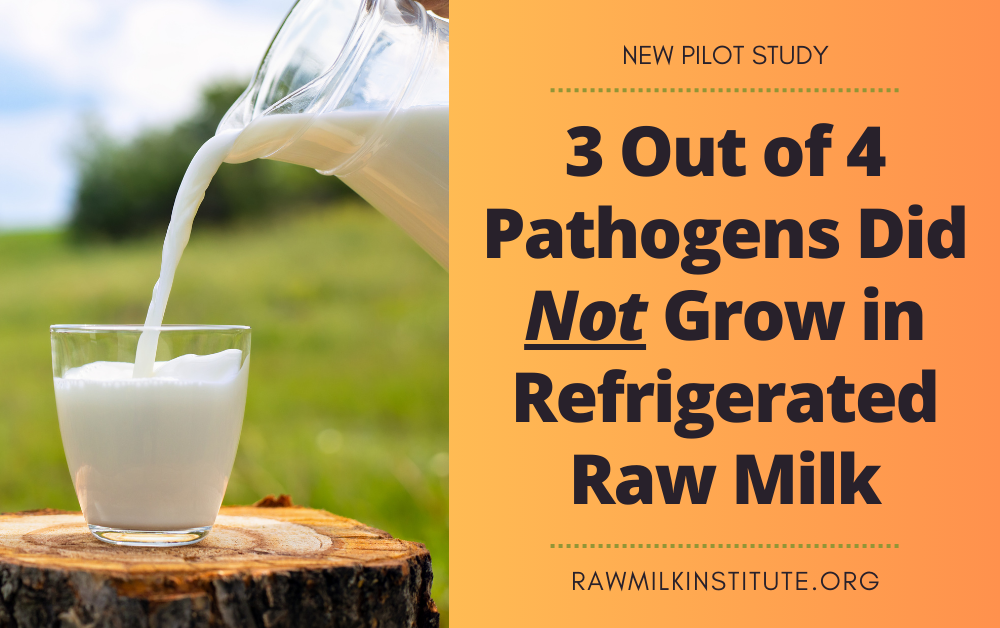We are pleased to announce that a new peer-reviewed paper has been published about pathogen growth in raw milk. The paper is "Suppression of pathogens in properly refrigerated raw milk" by primary authors Peg Coleman and Dr Tom Oscar.
This paper documents the results of a pilot study aimed at gaining insights into how well pathogens can grow in refrigerated raw milk. This study was commissioned by the Raw Milk Institute, with pathogen growth tests being performed at Food Safety Net Services (FSNS), an independent 3rd party lab.
Inapplicable Data Has Been Used to Vilify Raw Milk
Some of the data cited by Government agencies against raw milk includes pathogen growth studies where it was found that pathogens multiply greatly over time. However, these studies are not actually applicable to carefully-produced raw milk because they were performed in nutrient-rich broth instead of milk, they used tremendously high amounts of pathogens (such as 10 log 7, which corresponds to ten million pathogenic colony-forming units (CFU) of bacteria per mL), or they did not account for cold temperature storage.
Pathogens Were Purposely Added Into Raw Milk
In this new pilot study, samples of well-produced raw milk were purposely inoculated with the four main pathogens of concern for raw milk: E coli 0157:H7, Salmonella spp., Campylobacter spp., and Listeria monocytogenes. The raw milk was inoculated at two levels (high and moderate counts per mL).
Pathogen Growth Was Measured Over Time
The objective of this new pilot study was to document growth characteristics of these pathogens in carefully produced raw milk over a period of 14 days when stored at the refrigeration temperature recommended by FDA and USDA: 40°F (4.4 °C). The number of pathogenic bacteria present in the raw milk were counted on days 0, 3, 6, 9, 12, and 14.
Study Found No Growth of Three Types of Pathogens
The study authors concluded that:
"The major finding of the pilot study is statistical evidence of no growth at 4.4°C for the major foodborne pathogens causing illness associated with raw milk in the US (Campylobacter, E. coli O157:H7, and Salmonella). For listeriosis, rarely associated with illness from raw milk, the pilot study documented evidence of pathogen growth in 8 of 12 replicates (P = 0.001 to P = 0.028, significant by ANOVA in the second week of refrigerated storage)."
These results indicate that, when stored at the recommended refrigerator temperature, moderate to high counts of E coli 0157:H7, Salmonella spp., and Campylobacter spp. did not multiply over time in raw milk.
Listeria monocytogenes exhibited some growth in the second week of refrigeration. It is important to note that a recent systematic review found that the risks of severe listeriosis were greater for pasteurized milk than for raw milk.
Challenging Incorrect Assumptions of the Past
Although more data is needed, the results of this pilot study serve to provide an initial basis for challenging incorrect assumptions of the past that overestimated the growth of pathogens in clean, cold raw milk produced for direct human consumption by careful, trained producers.
Special thanks to Peg Coleman and Dr Tom Oscar for their work on this statistical analysis and paper.
You can read the full paper here: https://journals.plos.org/plosone/article?id=10.1371/journal.pone.0289249

